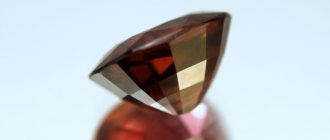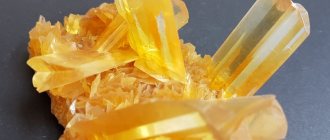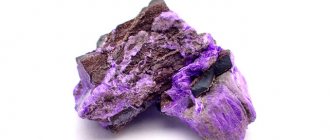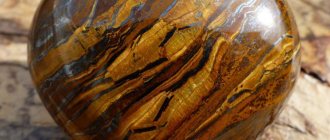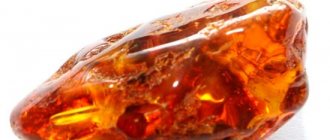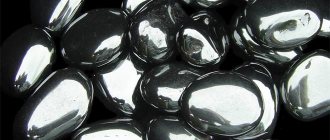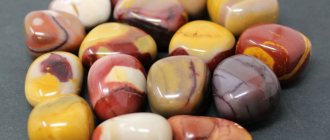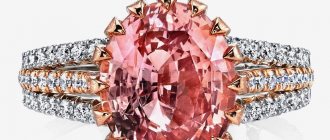Coral is a very interesting stone with its unusual origin. The stone is created by coral polyps found in tropical seas. Coral combines incredible appearance, magical properties and benefits for humans. You should be careful with corals, because their magic encourages a person to travel the world. Many rituals are performed using the stone.
Origin story
The name of the stone has several versions. According to one of them, the Greek word “coralion” means “that which was hard in the hand.” Coral was popular back in Mesopotamia and Ancient Egypt, but it earned special respect during antiquity.
It often figured in ancient Greek mythology, and the supreme sea god Poseidon lived in a palace built from these stones.
According to another version, the Arabic word “goral” means “amulet stone”. Muslims used black corals to create mourning wreaths, rosaries, knife handles, and cane handles. It was believed that the powerful spiritual powers of the stone were transferred to its owner.
In Rus' there was a widespread belief that coral was found in the brain of a dragon, so it was called dragonite. It was considered a prophetic stone and was used to perform magical rituals. Ominous properties were attributed to draconite; he was an instrument of revenge and damage.
In the Middle Ages, Venice became the center of trade in these stones. Red corals were used to make body jewelry, miniature sculptures, and inlaid weapons and church book covers with them. The pink stone was worn by young girls as a symbol of modesty and purity.
These days, most corals come to the world market from India, Japan, Hong Kong and Taiwan. The unusual stone is still of interest not only to collectors, but is also experiencing a new wave of popularity.
Origin
The name of the stone comes from the ancient Greek word “coralion”, which means “the depths of the sea”. Celtic tribes believed that talismans made from coral would bring good luck. In Ancient Times, protective talismans and amulets were made from corals.
In Poland and Ukraine, coral beads are the main part of women's national costume. It was believed that the more coral jewelry a girl wore, the richer and wealthier her family. Most often, stones were brought from the Red Sea by merchants.
The magical properties of coral made it popular among people, and even now the stone remains popular, especially in the jewelry industry.
Origin and extraction
Coral polyp
By processing salts contained in seawater, coral polyps secrete lime to form plantar plates. As a result, coral reefs, atolls and even entire islands appear.
For a long time, corals were considered plants, and only in the 18th century their animal origin was proven.
In jewelry, only lime frames are used - external skeletons left after the death of polyps. The most valuable part is the top of the coral tree.
On an industrial scale, corals are harvested using weighted, coarse nets that are moved and dragged along the seabed. Management of bottom nets and trawls is automated. However, with such mining, most of the valuable material deteriorates and perishes.
The profession of coral diver is still in demand. Many of them die at an early age, faced with the dangers that hide the underwater depths; others due to caisson disease.
The best fishermen live on the island of Cozumel, located in the Caribbean Sea off the coast of Mexico.
Decorations
Where is it mined?
These marine inhabitants live in tropical regions where the sea is warm all year round. They can be located either close to the surface of the water or at a depth of up to 300 m. The coasts with the largest number of coral reefs include: Japan, Sardinia, Taiwan, Turkey, Yugoslavia and Australia. They can be found off the coast of the Canary and Midway Islands and on the African coast.
The mineral is extracted in two ways:
- On an industrial scale, a mesh with large cells is used. It is dragged along the bottom, collecting a lot of working material at a time. The disadvantage of this method is that in the process most of them break, becoming unsuitable for jewelry making.
- With less damage, you can collect corals by hand . This is done by people who have completed training courses. However, this method also has its disadvantages. Firstly, it takes longer. Secondly, the work of a coral collector is dangerous and can even lead to death.
Coral mining
Physicochemical characteristics
Coral is an opaque stone that is translucent around the edges. The hardness of the mineral is low: for red varieties it is 3-4 according to Mohs, for black varieties it is two times lower. As a result, the coral is easily scratched by a knife.
In its raw form, the stone has a matte, even rough surface. It is rubbed with special wax polishes, giving it a silky shine.
When worn, natural corals may fade and turn pale. But the most common reason for this phenomenon is poor-quality painting.
Cheap white and even pink corals are dipped in hydrogen peroxide to impart the popular red hue, and are also treated with chemical dyes.
Healing properties of coral
The healing properties of coral have been known since ancient times. It was used to treat fractures, diseases of bones and joints, fever, and stop bleeding.
Beautiful jewelry helps in healing
Other healing qualities:
- Improves blood circulation, regulates metabolism.
- It has a beneficial effect on the nervous system and psyche, calms, relieves stress, improves memory.
- Treats boils, tumors and ulcers.
- Relieves headaches, treats insomnia.
- Prevents sore throats, diseases of the larynx, and thyroid gland.
- It has a good effect on the ligaments; it is recommended to wear coral beads or pendants for singers, speakers, lecturers, and teachers.
- When taken orally, it regulates blood sugar levels, strengthens bones and muscles, normalizes heart function, and regulates protein metabolism.
- Relieves intestinal spasms, treats poisoning, inflammation of the bladder.
- The powder helps heal burns and acts as an antiseptic.
The healing properties have not been proven by science, so it is better to use it as an adjuvant, and not a panacea for diseases and the main method of therapy.
Colors
Natural coral has a rich color palette - 350 shades. The color of the mineral depends on the level of light during its growth, as well as the composition of the organic matter.
The most popular types in jewelry are:
Red and pink corals
They owe their color to their high iron content. They are found mainly in warm seas at depths from 30 to 500 meters. The best red corals are found off the coast of Algeria.
Blacks, or Akkabars
They do not like sunlight and grow in caves and grottoes at great depths in the waters near Mexico and Australia. The resulting stones have low hardness, so only stones over 50 years old are used in jewelry.
White, or bianco
These corals are considered the cheapest, so they are often painted in more popular colors.
Blue, or Akori
They are highly porous and difficult to polish. The rarest and most valuable are spongy akori of a rich, almost blue color.
Pale pink corals
Received the name “angel skin”. These delicate natural stones are also highly valued.
In addition, multi-colored corals are often found in nature - a fantastic combination of gold, black and red hues.
Which zodiac signs is it suitable for?
Coral, as many astrologers, shamans, and magicians claim, under certain conditions turns into a source of evil. For example, some zodiac signs are better off not getting involved with this stone.
Coral will bring the greatest benefit to Cancers (pink) and Pisces (red, brown) . Representatives of the signs Aries, Taurus, Gemini, Leo, Libra, Scorpio, Sagittarius, Aquarius can also wear coral without fear.
However, the mineral promises only troubles and misfortunes for Virgos and Capricorns, so it is better for these people to choose another amulet.
Medicinal properties
There is an unconventional medical practice that uses the healing properties of precious and ornamental jewelry stones - lithotherapy.
According to this theory, coral is capable of:
- Activate metabolism.
- Normalize the functioning of the cardiovascular system.
- Help with depression and neuroses.
- Heal abscesses and ulcers, including internal ones.
- Regulate the functioning of the pancreas.
In addition, the stone is a source of protoglandin hormones. It is ground into dust and taken internally as a contraceptive.
Hindus believe that coral affects the throat chakra, which is responsible for breathing, hearing and skin. Ayurveda includes coral among the nine stones that symbolize the planets and control all processes on earth.
Blood red stone is associated with Mars, the patron of vital energy and passion.
It warms its owner and inspires him to take courageous and courageous actions.
In Portugal they believe that red coral helps with headaches, in England - with sore throat, in Mexico - with fever. In Southeast Asian countries, coral powder is sold in pharmacies and added to ointments, tinctures, and mixtures.
White coral is used in Japan for dental prosthetics to speed up the healing of bone fractures. Its calcium structure is easily perceived and absorbed by the human body.
Coral is also popular in cosmetology. It is based on antioxidant peeling, which has an effective rejuvenating effect on the skin.
Products and decorations made of stone and its use
Coral products, like any other products made from natural materials, do not go out of fashion. Only their style, design and color preferences change. Now the trend is jewelry made from carbonetto (burgundy, oxblood) and rosso (red) stones.
Headsets made from this gem are ideal for both daily use and going out into the world. A precious set of coral goes well with an evening dress, and rings in gold or platinum frames are suitable for men.
There is a main rule in wearing coral products - they must come into contact with human skin. That is why it is recommended for women to wear a pendant, necklace or beads under an open neckline, and to wear bracelets under clothes with short sleeves.
Note! It is believed that corals differ in gender. The “feminine” gender includes white gemstones, and the “male” gender includes red ones. If the wearing rules are not followed, an inappropriate stone can negatively affect the fate of its owner.
Magical properties and beliefs
As a talisman, coral improves memory. It is considered a talisman against poison, witchcraft, shortness of breath, loss of appetite, and develops intuition and logic.
The ideal time to wear it is the new moon phase, and the most dangerous time is the full moon period. It is not recommended to wear coral jewelry often, as it provokes capriciousness and eccentricity.
Natural stone has long been considered the patron saint of travelers.
It protects against dangers that lurk on long journeys, helps to establish new connections, calms bad weather, calms storms and thunderstorms.
However, a coral sunset in the evening sky foreshadows windy and turbulent weather.
Phallic-shaped coral amulets are very popular in Thailand.
They symbolize the linga of the god Shiva, which protects the owner from evil spirits. Amulets are worn around the neck or on the belt, mantras are read over them, and ritual chants are performed.
In South India, Kyrgyzstan and Tajikistan, women wear coral beads to bring peace and harmony to their marriages and to cope with infertility.
In addition, the mineral acts as an indicator of health status - a sharp loss of color indicates a serious illness of its owner. If you dreamed of coral, this is a sign of recovery from a serious illness.
35 years of married life together is called a coral wedding. On this anniversary, husband and wife give each other jewelry with coral inserts, talismans and souvenirs.
Black coral jewelry
Black coral is used to make jewelry:
- beads;
- earring;
- necklace;
- rings;
- bracelets;
- hair jewelry.
The frame is made of gold, silver, platinum. The mineral is often combined with rubies, garnets, and emerald.
Basic care rules that will help you wear your jewelry for many years:
- store in a case;
- clean when soiled with warm water and soap;
- After washing, dry with a soft towel;
- do not keep in direct sunlight to prevent fading;
- do not wash in hot water;
- don't drop it.
You can wear black mineral jewelry with many shades of clothing. It goes best with white, yellow, gray, beige, blue, black. Successful combinations:
- bright summer dress and bracelet;
- blue jeans, gray sweater and necklace;
- red dress and earrings;
- light-colored office suit and ring.
View this post on Instagram
Publication from VIP_vintage (Inna, Moscow) (@vip_vintage) February 25, 2019 at 4:48 PST
View this post on Instagram
Posted by Vintage Jewelry (@antique1911) Dec 6, 2021 at 12:03 pm PST
View this post on Instagram
Posted by Jewelry Designer Alla (@alla.butik4you) Oct 10, 2018 at 4:25 PDT
Coral in astrology
In astrology, it is generally accepted that red coral is a masculine stone, and white coral is a feminine one. It is not recommended for members of the opposite sex to wear inappropriate colors: a woman who regularly wears jewelry with red coral will take on rough and masculine features, and vice versa.
Coral has a beneficial effect on people born in the year of the Tiger or Red Cat (1962, 1974, 1986, 1998). It brings them good luck and protects them from the anger and envy of strangers.
As for zodiac signs, red coral will be an excellent talisman for Pisces or Aries . But it is categorically contraindicated for earth signs. Virgos especially do not like him, with their pragmatism and complex character.
White coral suits Taurus and Cancer . It promotes rapid healing of wounds and cures physical and mental illnesses.
As for names, coral patronizes Irina, Victoria, Svetlana, Nadezhda, Nonna and Afanasy.
At the same time, talisman stones bring good luck to their owner only if they are obtained honestly.
How to distinguish from a fake
The quantity of black corals is limited, demand and price are high. On the jewelry market they give out the following for a stone:
- Fake. For imitation, colored glass, colored limestone or plastic are used.
- Artificial mineral. It has been produced since the 20s of the last century by burning calcite. Only a connoisseur can distinguish it from the original.
- Pressed coral. It is obtained by grinding substandard fragments into powder and then shaping them into a ball, oval, etc.
The following features will help you distinguish a real original from a fake:
- glass fakes are heavy and cold;
- limestone is easily scratched with a needle, leaving a white furrow;
- when heated, plastic melts, emits a characteristic odor, and the natural mineral cracks;
- prolonged exposure to water makes the natural mineral brighter;
- the price of a fake is lower, the difference can be 10–30 times.
See what the stone looks like:
Decorations
The most traditional coral jewelry is beads. They help give the image bright and rich folk notes. But the richness of the natural palette allows the mineral to be used in a wide variety of jewelry.
A soft pink coral is suitable for a young girl’s ring, a bright orange set in gold will decorate a mature lady, a rich black one will elevate a man’s signet or bracelet.
Unprocessed coral branches are also used as decorations. They are called cornetti and are worn around the neck in the form of a pendant. This unusual product goes well with a romantic look.
How to wear and care
- Wear on a clean body;
- After use, wipe with a napkin and put it in the box; it is better to wrap the product itself in a soft cloth to prevent it from being scratched;
- Take pictures before going to the beach, pool, sauna. Water containing bleach can kill stone;
- You need to touch the stone as little as possible, because sweat leaves marks on the coral;
- Beads or necklaces should be worn on items made of soft fabric, because rough fabric may cause scratches;
- To restore the brightness of the product, you need to briefly place it in hydrogen peroxide;
Coral products can be worn by women and men of any age. The younger the girl, the lighter the coral should be.
How to spot a fake?
Gilson coral
The main criterion by which you can determine whether the coral you are looking at is natural is its price. It shouldn't be too low.
Currently, several substitutes for natural stone are common:
- Synthetic analogue, or Gilson coral. It was first obtained in 1972 in a Swiss laboratory from calcite powder. In terms of its physical and chemical properties, Gilson coral is almost identical to stone mined from the ocean depths, but is much cheaper. It can be distinguished from a natural mineral by the absence of a characteristic mesh pattern on the surface.
- Quartzite. This is a cheap stone that looks like coral. It is easy to recognize by its temperature - it always remains cold.
Quartzite
- Imitation coral. They are created from pressed coral shavings with the addition of dyes and plastics. There are also very cheap counterfeits, consisting entirely of glass, plastic or polymers. They are easy to recognize by their uniform color, which is very rare in nature. You can grind a piece of stone and add acetic acid - the natural calcium material will enter into a chemical reaction, causing bubbles to form on the surface.
Like many seafood, natural coral becomes brighter after being in water for a long time: this does not happen with imitations and fakes. On the contrary, if a low-quality colored stone was purchased, the water may change color.
Where is it used?
- Sponge coral is a source of lime and is often used in jewelry making;
- Often used in cosmetology and medicine in powder form;
- Beautiful corals are prized by jewelers and decorators. The stone is set in gold or silver. Products made from coral belong to publicly available jewelry. ;
- Corals are often collected throughout life because there is a variety of shapes, colors and species.
Most often, mined corals are brought with defects, that is, with small cracks and holes. Their appearance is improved with dye and wax. But there are also ideal natural stones without flaws.
Interesting Facts
- Coral is popular and revered in the United States. Thus, the black mineral is a symbol of Hawaii, and the agate mineral is the symbol of the state of Florida. Here is the city of Cape Coral, which has the largest number of shipping canals in the world.
- Once on land, the coral begins to age and slowly die. After 200 years, the former marine life can completely dry out and turn into dust.
- The Great Barrier Reef is not only the largest coral formation, but also the largest natural object on Earth formed by living organisms. It is included in the UNESCO World Heritage List. In 2013, a scandal erupted around the reef: during a US-Australian military exercise, four bombs were mistakenly dropped on it. Fortunately, the Great Barrier Reef was not damaged.
- It has not yet been reliably established why Karl stole corals from Clara. Presumably, the reason for the act was revenge for the stolen beloved clarinet.
Coral and its physical properties
Coral is a calcareous skeleton of a marine invertebrate polyp that lives in tropical seas. They form tree-like structures with branches that form coral reefs and islands.
It got its name from the ancient Greek word “corallion”, which was the name for sea polyps. The stone is an opaque material, translucent when chipped, consisting of calcium and aragonite. It is very fragile and sensitive to high temperatures, acids, and hot water. Over time it fades and becomes cracked.
In its natural form, coral is unattractive and dull. It acquires its glassy shine and smoothness after it is polished by a master.
Photo
CoralMineral care
Corals are difficult to care for. In order for the product to serve for many years, the following recommendations should be followed:
- protect the mineral from any mechanical impact - shock, scratching, squeezing, falling;
- exclude contact of the mineral with any chemicals - dishwashing and laundry detergents, cosmetics, perfumes;
- store corals at room temperature and a normal level of humidity - a sharp temperature change, high humidity or, conversely, too dry air can lead to damage to the integrity of the mineral;
- to store coral, use a separate box, and wrap the mineral itself in tissue paper (storing corals in polyethylene is not allowed);
- To clean corals from contamination, use a damp cloth; to dry, use a dry piece of flannel.
Types of coral
Corals have many varieties; there are about three and a half thousand . Coral islands can grow from a small colony to an entire island, however, this is a very long process. The largest deposit is the large barrier reef, which is several kilometers long and is located near the Australian coast. Coral fossils can occur in a wide range of shapes - spherical, tree branch-like, icicles or stalactites.
Many inhabitants of the deep sea live in coral formations. It turns out that one form of life, after its death, gives shelter to new forms. The palette of the gem is also quite wide - there are about three hundred shades , among them there are:
- red;
- black;
- blue;
- blue;
- white;
- gold;
- pale pink.
Red is the most common color and is the color most often used to make jewelry. White stones are used in medicine. But blue coral is quite rare, which is why it has a very high price. Products made from black, gold and blue coral are also considered expensive.
Valuable coral stone
